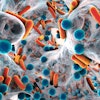
Chlorine dioxide disinfectant may provide an effective solution for mitigating the risks of biofilm formation and bacterial growth in dental unit waterlines (DUWLs), according to a study published on June 1 in BMC Oral Health.
Additionally, using chlorine dioxide disinfectant at a concentration of 20 mg/L ensures adequate cell safety and resistance to metal corrosion, the authors wrote.
"After thorough research, we recommend using chlorine dioxide disinfectant at a concentration of 20 mg/L for significantly reducing bacterial biofilms in DUWLs," wrote the authors, led by Cao Yue of the Zhejiang Chinese Medical University School of Stomatology in China.
In the study, chlorine dioxide disinfectants at concentrations of 5, 20, and 80 mg/L were used to treat biofilms of Staphylococcus aureus (S. aureus) and Escherichia coli (E. coli) cultured in DUWLs. The effectiveness of disinfection was evaluated by measuring bacterial counts and culturing techniques.
Simultaneously, human skin fibroblast cells were exposed to the disinfectant to observe any changes in cell morphology and assess cytotoxicity. Additionally, corrosion tests were conducted on metals, including carbon steel, brass, stainless steel, and aluminum.
Following the analysis, it was revealed that significant reductions in S. aureus bacterial counts were observed with 20 mg/L and 80 mg/L chlorine dioxide, as well as with a 20 mg/L chlorine-containing disinfectant, demonstrating their effectiveness in biofilm clearance, the authors wrote.
Except for 5 mg/L chlorine dioxide, all tested concentrations significantly decreased E. coli biofilm bacterial counts. However, there were no significant differences among the higher concentrations, suggesting a plateau in efficacy beyond 20 mg/L, they wrote.
At 5 mg/L chlorine dioxide, cells maintained normal morphology, indicating minimal toxicity. At 20 mg/L, slight morphological changes and mild toxicity were observed, while 80 mg/L caused significant changes in cell shape and reduced adherence, indicating higher cytotoxicity. In contrast, the 20 mg/L chlorinated disinfectant had milder effects on cell morphology, suggesting lower or comparable toxicity to the 20 mg/L chlorine dioxide, they wrote.
Additionally, corrosion tests demonstrated that chlorine dioxide disinfectants exhibited a corrosive effect on carbon steel and brass, with the degree of corrosion escalating with higher disinfectant concentrations. Specifically, chlorinated disinfectant exerted a more pronounced corrosive effect, they wrote.
However, to fully comprehend the effectiveness of these chemicals, additional studies are needed to investigate the specific properties of 20 mg/L chlorine dioxide that provided these benefits, the authors wrote.
"At a concentration of 20 mg/L, it effectively reduces microbial contamination with minimal cytotoxicity and equipment corrosion, presenting a superior alternative for dental water systems," Yue et al concluded.




















